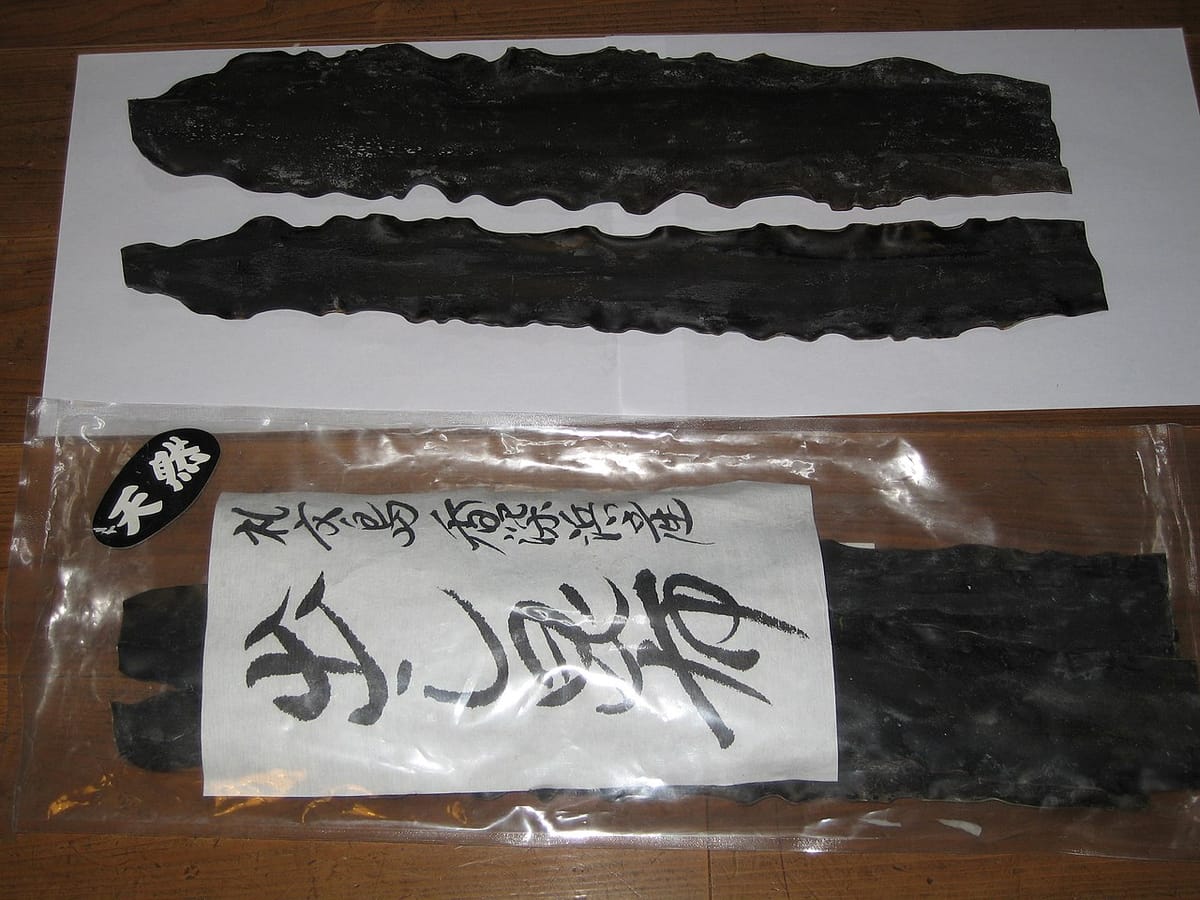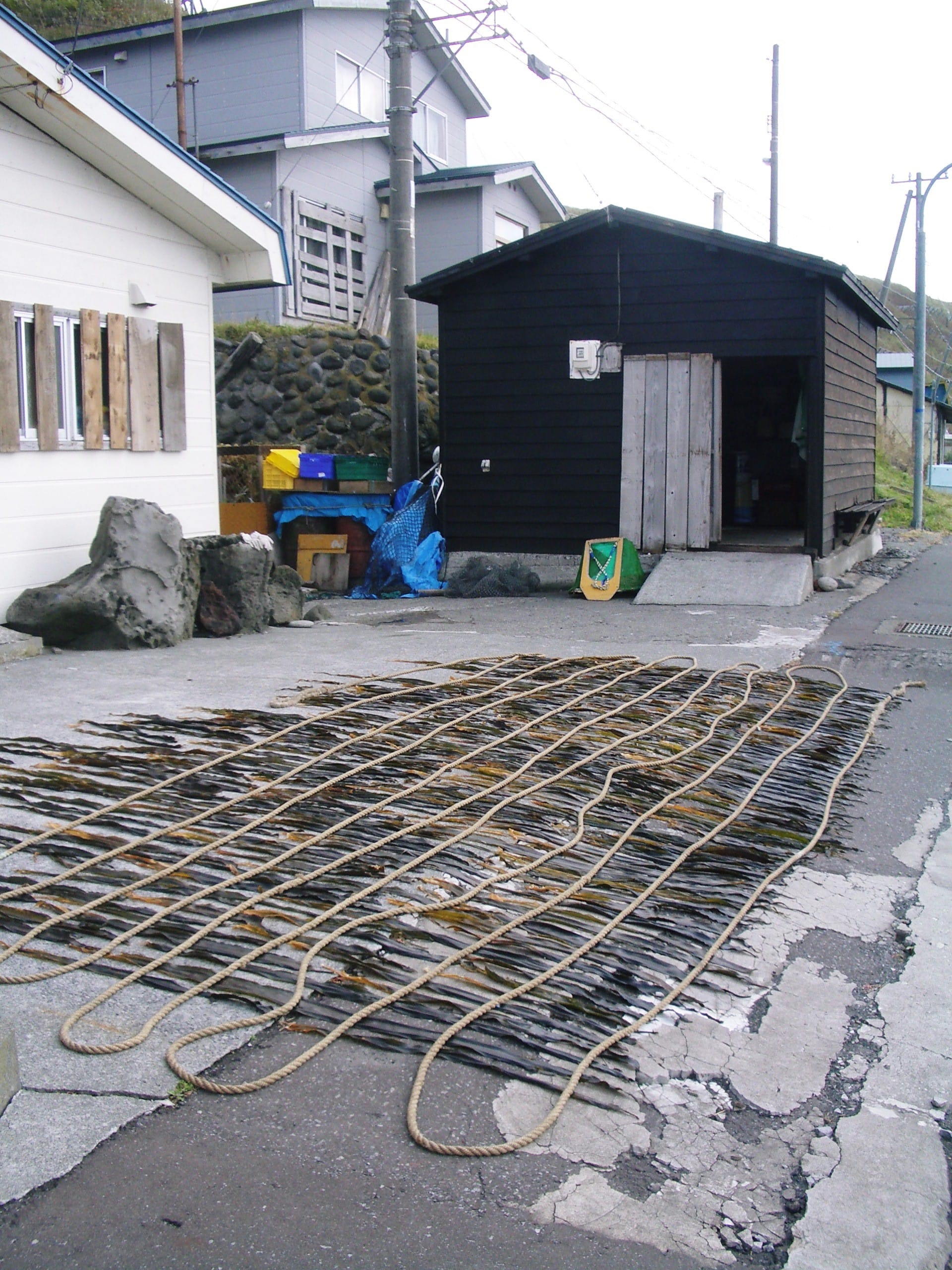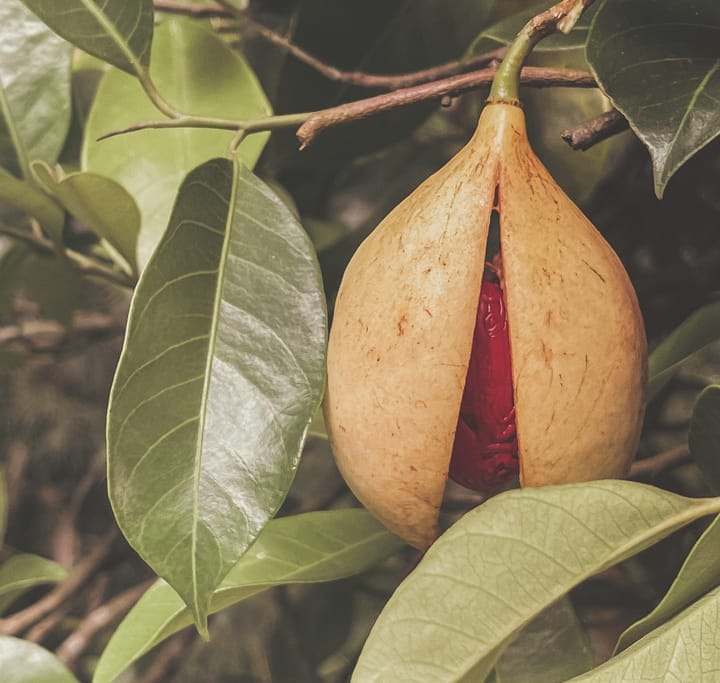Discover Japan's Finest Kombu: The Ultimate Premium Seaweed Experience
Premium Hokkaido kombu has become the culinary world's most intriguing luxury ingredient. From Ma Kombu's golden broths to Rausu's umami intensity, discover why top chefs treasure this rare seaweed

In the pristine waters off Hokkaido's coast, where the Kuroshio and Oyashio currents collide, grows one of Japan's most prized culinary treasures—a seaweed that commands prices of $120-150 per pound in American specialty markets.
This is the world of premium kombu, where two varieties reign supreme: the illustrious Ma Kombu and the legendary Rausu Kombu, often called "the King of Kombu."
What is Kombu?
Kombu (昆布) is a type of edible kelp, a seaweed commonly used in Japanese cuisine to enhance flavor.
Rich in umami, it’s a key ingredient in dashi (出汁), a traditional broth foundational to many dishes like miso soup and noodle dishes.
Harvested primarily from the cold waters around Hokkaido, Japan, kombu (昆布) is prized for its natural glutamates, which deepen savory tastes, and its nutrients, including iodine and fiber.
Available in dried or fresh forms, premium kombu (昆布) is valued for its complex flavor and culinary versatility.
The Four Pillars of Hokkaido's Kombu Empire
Not all kombu is created equal. Like wine vintages or truffle harvests, kombu exists in a complex hierarchy that determines its market value and culinary prestige.
Hokkaido, Japan's northernmost island, produces 90% of the nation's kombu, with four major varieties dominating the market: Ma Kombu, Rausu Kombu, Rishiri Kombu, and Hidaka Kombu.
While all four varieties have their place in Japanese cuisine, Ma Kombu and Rausu Kombu sit at the apex of this hierarchy, commanding the highest prices and capturing the attention of Michelin-starred chefs worldwide.
Rishiri Kombu, though also premium, is prized for its clear, delicate dashi favored in kaiseki cuisine, while Hidaka Kombu serves as the versatile workhorse of everyday cooking, offering excellent quality at more accessible prices.
Ma Kombu: The Gold Standard
Ma Kombu (真昆布), literally meaning "true kombu," represents the pinnacle of refinement in the kombu world.
Harvested from the southern waters of Hokkaido, this variety is distinguished by its exceptionally broad, thick leaves that can stretch up to 8 meters in length and 30 centimeters in width.
The finest Ma Kombu specimens, particularly those from the renowned Kurokuchihama region, are considered among Japan's top three kombu varieties.
Premium Grade Characteristics:
- Appearance: Light brown color with substantial thickness
- Texture: Firm yet supple, with visible glutamic acid crystals on the surface
- Flavor Profile: Refined sweetness with elegant umami notes
- Dashi Quality: Produces crystal-clear broth with subtle, sophisticated flavor
Price Range: In the US retail market, Ma Kombu typically sells for $120-140 per pound for premium grades.
Exceptional specimens from regions like Kurokuchihama can reach $150-180 per pound. Small retail packages of 25g (0.88 oz) sell for $8-12, making this one of the most expensive seaweeds available to American consumers.
Aged varieties using the traditional "Kuragakoi" warehouse technique command additional premiums of 20-30%.
Rausu Kombu: The King of Kombu
Rausu Kombu (羅臼昆布) earns its royal title through an extraordinary combination of rarity, flavor intensity, and meticulous processing.
Harvested exclusively from a small area near the Shiretoko Peninsula—a UNESCO World Heritage site—Rausu Kombu undergoes a remarkable 23-step processing method that transforms it into Japan's most sought-after seaweed.
Premium Grade Characteristics:
- Appearance: Dark brown to reddish-black color with broad, rounded leaves
- Texture: Exceptionally soft and tender, melts readily in hot water
- Flavor Profile: Intensely fragrant with rich, complex umami
- Dashi Quality: Produces golden-colored broth with profound depth
Price Range: In the US market, authentic Rausu Kombu retails for approximately $120-150 per pound. Premium specimens processed by master craftsmen typically range from $140-180 per pound .
Small consumer packages are the most common format, with 30g packages retailing for $8-10 and 50g packages for $9-15.
The highest grades, particularly those aged for optimal flavor development, can reach $200 per pound in exclusive specialty shops.
The Other Hokkaido Nobles: Rishiri and Hidaka
While Ma and Rausu command the highest prices, two other Hokkaido varieties deserve recognition:
Rishiri Kombu (利尻昆布): Harvested from the waters around Rishiri Island in far northern Hokkaido, this variety is harder and produces an exceptionally clear, refined dashi.
It's especially popular among kaiseki chefs for its ability to create a clear, delicate broth with a mild flavor that doesn't overpower the dish. Premium Rishiri typically sells for $100-130 per pound in US markets.
Hidaka Kombu (日高昆布): The second most harvested natural kombu in Hokkaido, this long, ribbon-like variety typically measures 7-8 meters long.
Its softer texture makes it ideal for eating applications beyond dashi, such as oden and kombu rolls.
As the most affordable of the four major types, Hidaka sells for $40-80 per pound, making it an excellent entry point for home cooks exploring premium kombu.
The Science Behind the Price: What Makes Premium Kombu Extraordinary
The astronomical prices of premium kombu aren't merely market speculation—they reflect genuine differences in chemical composition and culinary performance.
Laboratory analysis reveals that Rausu Kombu contains 2,286mg of glutamic acid per 100g, significantly higher than standard varieties. This elevated glutamate content translates directly into superior umami intensity and depth of flavor.
The unique growing conditions in Hokkaido's waters contribute to this exceptional quality.
The meeting of warm and cold currents creates an environment rich in minerals and nutrients, while the extended two-year growing period allows the seaweed to develop its complex flavor compounds fully.
Water temperatures, which fluctuate between near-freezing in winter and moderate warmth in summer, stress the plants in ways that concentrate their valuable compounds.
From Ocean to Auction: The Journey of Luxury Kombu

The harvest of premium kombu is a race against time and elements. Divers work in the pre-dawn hours during the brief summer harvest season, hand-selecting only the finest specimens.
Unlike mass-market kombu, which may be mechanically harvested, premium varieties require human expertise to identify the perfect balance of size, thickness, and texture.
Immediately after harvest, the kombu must be laid out to sun-dry on the same day while still fresh—a process that requires perfect weather conditions.

Too much humidity ruins the batch; too little sun leaves harmful moisture trapped inside. Master processors can lose entire harvests to a single day of unexpected rain.
The most exclusive kombu undergoes additional aging in specialized warehouses. Okui Kaiseido, a purveyor established in 1871, maintains climate-controlled aging facilities where Rishiri Kombu from 1989 still rests, developing flavors that modern harvests cannot replicate.
The Culinary Elite: How Michelin-Starred Chefs Use Premium Kombu
In the kitchens of Japan's most exclusive restaurants, premium kombu serves as the foundation for transcendent culinary experiences.
Chefs at three-Michelin-starred establishments often maintain relationships with specific kombu producers, securing allocations of the finest grades years in advance.
The preparation methods for premium kombu differ dramatically from standard varieties.
While ordinary kombu might steep for 30 minutes, Ma Kombu requires precise temperature control—never exceeding 60°C (140°F)—to preserve its delicate flavor compounds.
Rausu Kombu, with its higher oil content, releases its essence even more readily, requiring just 10-15 minutes of gentle heating to produce its signature golden dashi.
Some innovative chefs have pushed beyond traditional applications. At Tokyo's exclusive Kombu-specialized restaurants, diners experience kombu in forms that justify its luxury pricing:
- Kombu-jime: Premium sashimi wrapped in Rausu Kombu sheets for 24-48 hours, absorbing umami while maintaining the fish's pristine texture
- Kombu Chips: Paper-thin slices of aged Ma Kombu, lightly fried until crispy, served as a $50 appetizer
- Kombu Ice Cream: Infused with concentrated kombu essence, offering umami notes in an unexpected format
The Future of Luxury Kombu
As chefs embrace umami-driven cuisine, premium kombu follows the path blazed by truffles and saffron—from obscurity to obsession. Yet unlike those ingredients, kombu faces existential threats.
Climate change pushes Hokkaido's kelp forests northward each decade. Traditional harvesters age without successors willing to dive in freezing waters.
The specialized knowledge required for proper processing—reading weather patterns, timing the harvest, executing perfect drying—disappears with each retiring master.
This convergence of environmental and cultural challenges suggests that today's premium kombu may become tomorrow's extinct delicacy. What we can purchase now, future generations might only read about.


